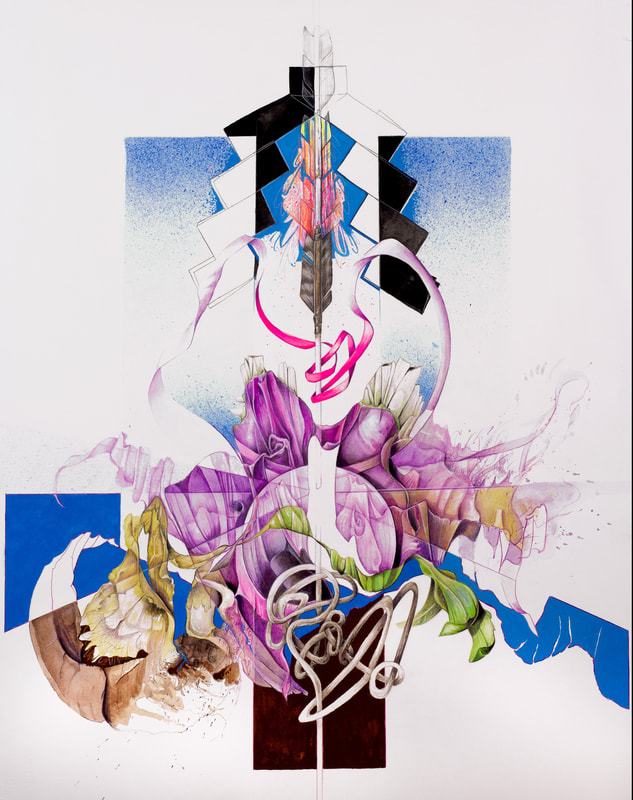|
PHILLIP POTTER
Phillip Potter is a Denver based artist. Throughout his career, he has worked in the areas of botanical illustration, color based abstractions, and representational work. His most recent work revolves around themes of perception and consciousness, through the use of symbolism and juxtaposition, integrating an intermingling color theory. Experiences in life are hidden by our mundane and corporeal reality. Reality is our perception and how we process experiences. There is no one objective reality. Reality is a thing to explore, not to conquer. I believe that we are nothing more than the results of causative phenomena, as well as our experiences through perception of this phenomena, that is ever shifting. I am looking to find these hidden things, these hidden things within ourselves, within the experience of the infinite nature of reality. By creating this work, I set the conditions of self initiation to link to the divine or divine intervention of experiential reality. Through the intermediary of the creative process, I see the possible outcomes of the present, future and of course the past. Art is not just a visual object. It is an experience even if it seems stationary. as the viewer, you are participating and creating your own experience. By mixing your experiences with the images and symbolism, your perception is the key to weaving your reality into something fantastical. It may be ever changing, or never changing. Seeing the illusion of a stable reality fall away (even just for a brief moment), to perceive the ineffable nature of reality in its infinite possibilities. perception is reality and reality is strange. www.phillippotter.com |
Search by typing & pressing enter

